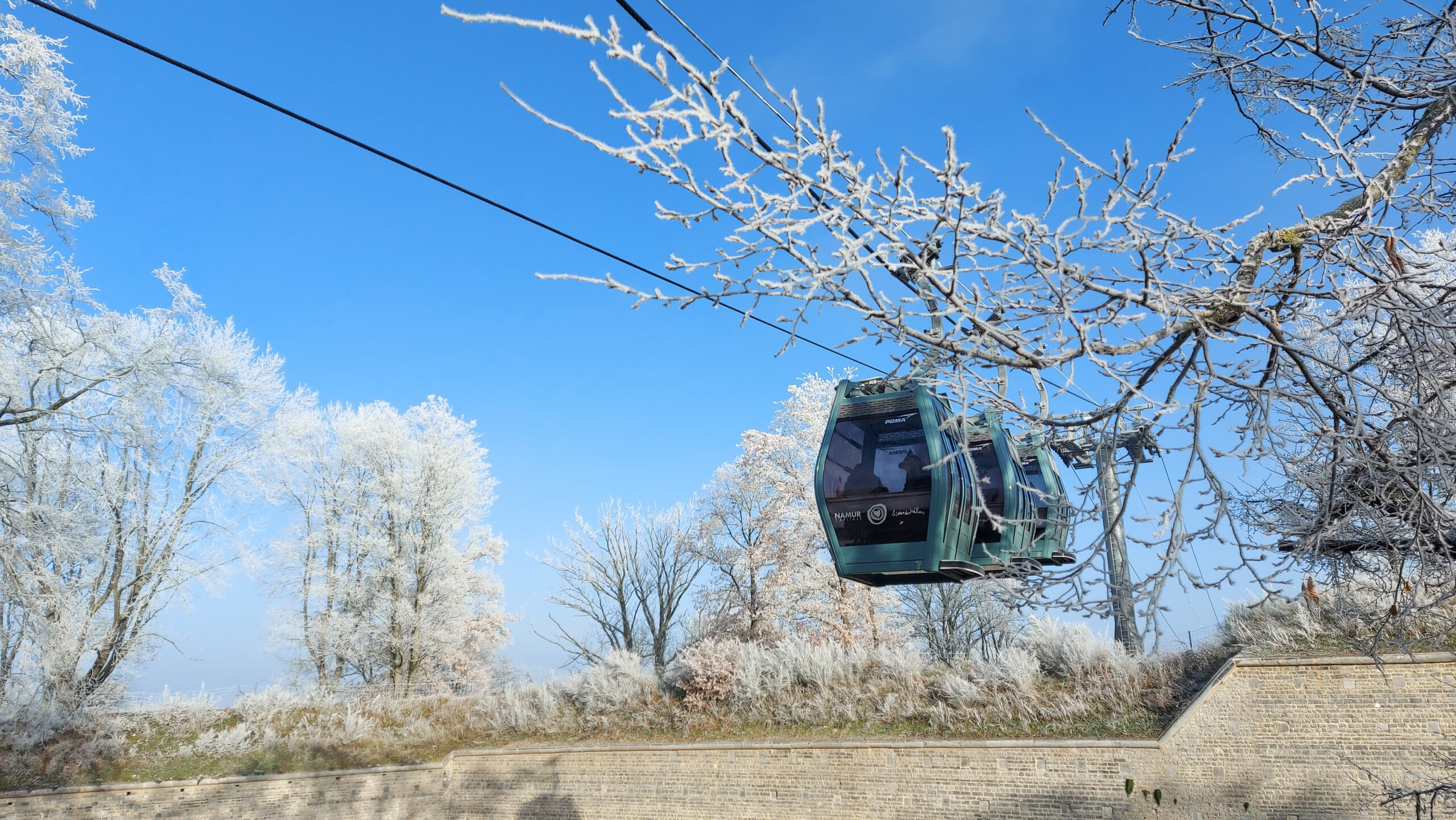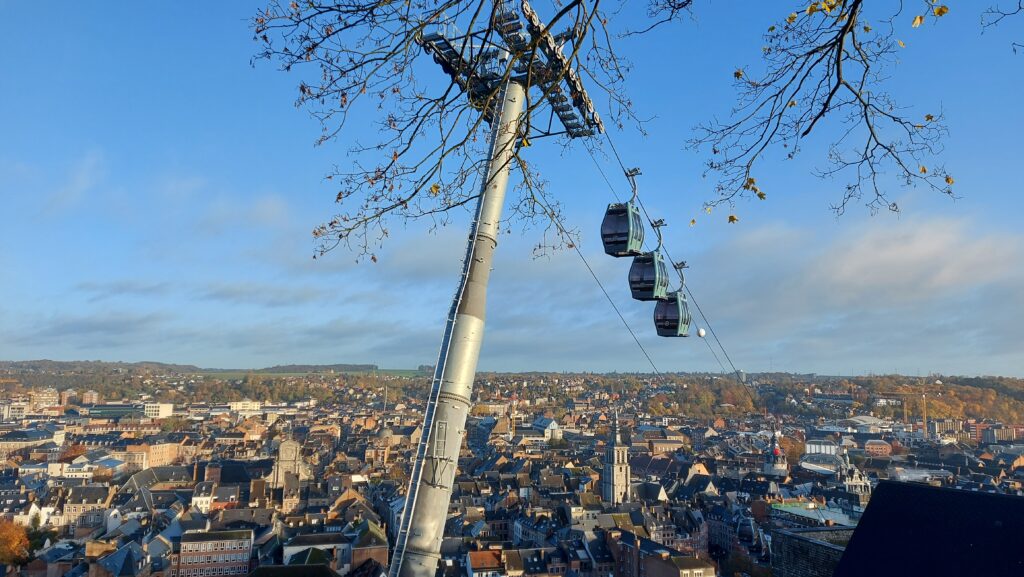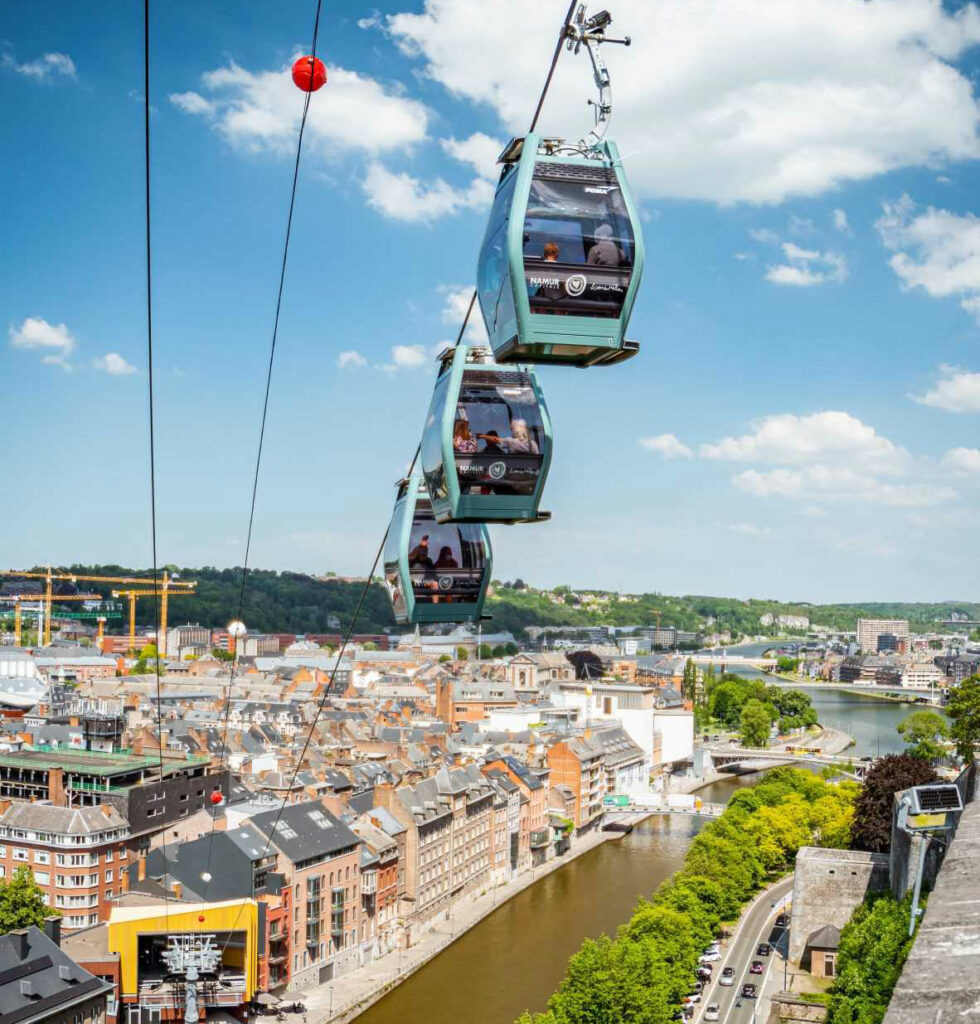
Cities, SI Urban 1/2023
Namur: Téléphérique de la Citadelle
Under the leadership of its mayor Maxime Prévot, the city of Namur has recently implemented various major real estate projects in the cultural and tourist sector. These have improved the attractiveness of the city to tourists from Belgium and elsewhere. At the same time, the cable car, constructed by the manufacturer POMA, has been perfectly integrated into Namur‘s tourist provision, to the point of becoming its spearhead.
Only one of the supports is visible.

Increased capacity
The addition of six gondolas in June 2022 not only increased capacity from 300 to 400 passengers per hour and per trip; above all, it also improvedthe quality of the service offered, by eliminating waiting times for boarding and by offering the user a journey of four minutes instead of the previous seven, as well as better comfort on board. In 2022, the cable car in Namur carried 180,000 visitors, an increase of around ten percent compared with the previous year.
Among these, 4,000 people have an annual subscription for the cable car. Téléphérique offers a way to cross the river Sambre, as well as hosting events such as on board meals in the gondolas, local product tastings and activities for children.
The cable car is crossing the river sambre.

Easy access and time saving
The city of Namur has launched its cable car project under a concession that includes design, construction, operation and maintenance for a period of 30 years. The city of Namur awarded the contract to the Société Anonyme du Téléphérique de la Citadelle de Namur, which is responsible for the investment in and operation of the project.
POMA, LA BELLE MONTAGNE and FRANKI are the shareholders of Société Anonyme du Téléphérique de la Citadelle de Namur, which bears the traffic risk. In order to optimise the transport service in the city, the opening hours of the Téléphérique have been extended to offer a new form of urban travel. Every weekday, the Téléphérique is open from 7.00 am until 6.30 pm, offering transport to work or school. Discussions are underway to come up with new, more attractive solutions, for example by combining the cable car with the public transport provision and by offering free car parking 24 hours a day at the level of the upper station.
“The main advantages of the cable car for commuters include: easy access, time saving, a competitive subscription price, reliability of the cable car, travel comfort and the ideal location of the two stations with a car parking zone that offer more than 250 free spaces around the upper station“, Director Jean-Charles Dekeyser said.
Technical Data:
TÉLÉPHÉRIQUE CITADELLE
TÉLÉPHÉRIQUE CITADELLE
|
Length: |
652 m |
|
Vertical Rise: |
102 m |
|
Speed: |
6 m/s |
|
Travel time: |
about 7 minutes |
|
Number of gondolas: |
12 s |
|
Passengers per gondola: |
6 |
|
Capacity: |
408 P/h |
|
Passengers per day: |
130 |
Three gondolas on the line
A small number of gondolas are arranged in series and attached to a single cable. The speed is adjustable, so that the cable cars can slow down in the stations. This allows simultaneous bording and alighting for passengers at Esplanade and Centre-Ville stations.
In addition, it offers easier accessto the gondolas for pushchair and wheelchair users. When two gondolas are in the station (G1 and G2), the other two are in the middle of the line side by side, moving slowly like the gondolas in the stations, before accelerating again.
Blending into urban surroundings
The two stations, constructed in the typical red brick, blend discreetly with the surroundings. The technical parts of the gondola are well camouflaged and the ingenious design of the transparent glass surfaces allows perfect integration with the surrounding buildings. Careful attention has been paid to the installation of the supports; of the four on the line, only one is obviously visible, whereas the others blend in with the surroundings.







